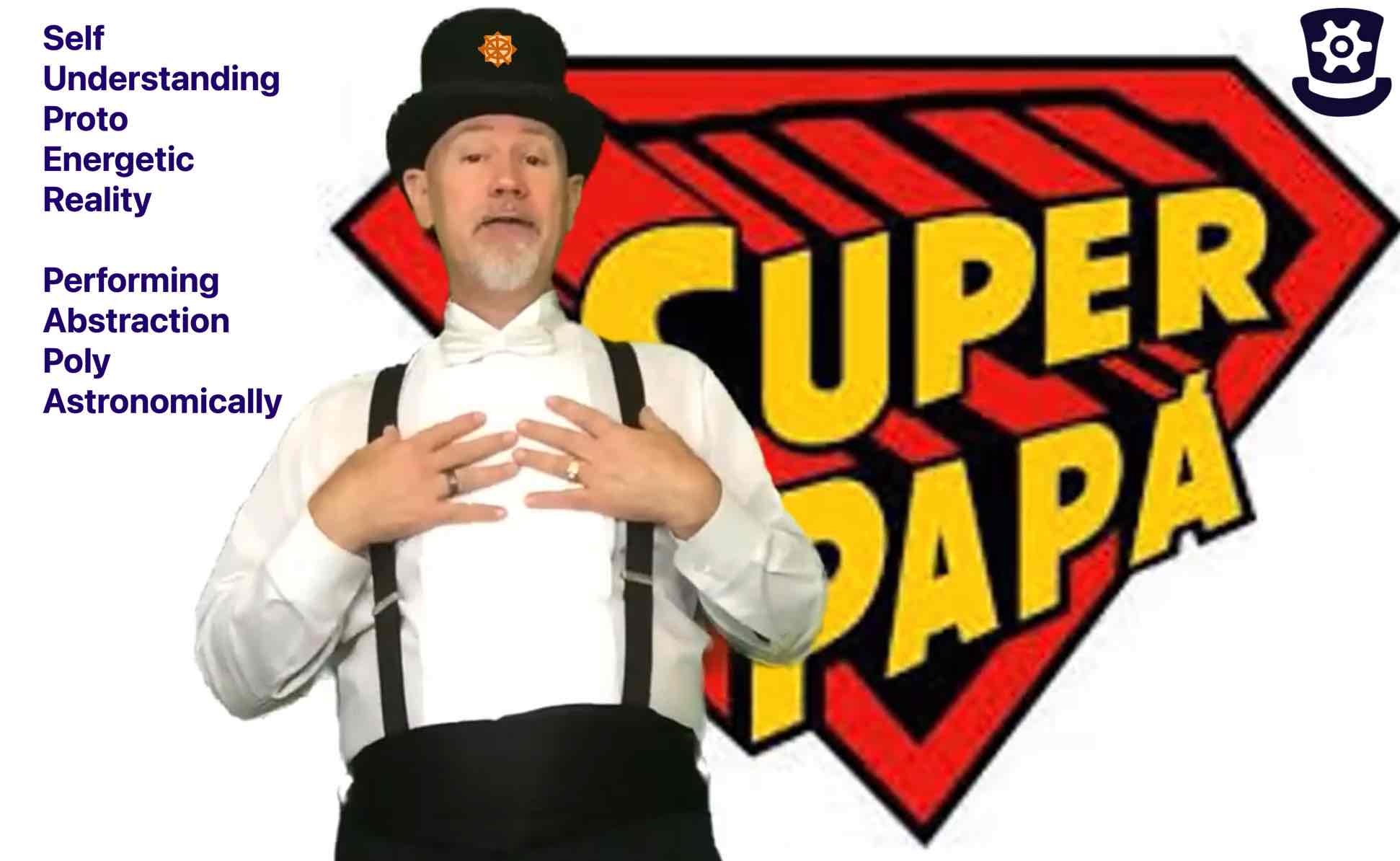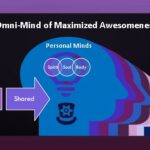The truth machine the Pamalogy Society will raise money for will dig deep into every kind of idea, not just political ones. Since philosophers will do the beta testing and shape the introductory product, the first question you’ll find worked out on it, is my own claim that Maximized Awesomeness is real. The most obvious objection is the problem of evil. If Maximized Awesomeness includes all that could possibly be good, and excludes any type of evil, then how can it be real? Today, I’m going to show you how Maximized Awesomeness defeats evil. Ready?
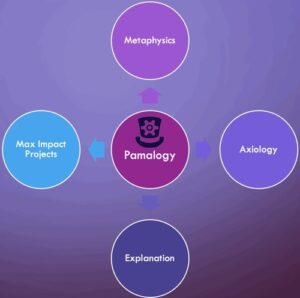
Before explaining how Maximized Awesomeness defeats evil, I think I should summarize some of the territory we’ve covered since I started this blogcast. In Episode 1, I gave you an orientation. I explained what the Pamalogy Society is and does. We will raise money and provide human resources for high impact concept stage enterprises. And what we are is a philosophical society. Pamalogy as a philosophy considers the subject of awesomeness – your awesomeness, awesomeness in the world, and cosmological awesomeness. You look around the world, and you see a lot that is awful instead of awesome. So for pamalogy to propose that Maximized Awesomeness is real, seems like a stretch. But I’m a pamalogist. I’ve asserted that I could prove it was true and that I’ll do so for anyone who takes our free Pamalogy 101 course, where you can earn yourself a nice top hat with a widget on it that signifies your accomplishments in the society. All you have to do is pass the course.
In Episode 2, I described the project I thought would be the most strategic and important to fund and support. The Pamalogy Society is about action, not just words. The project that is at the top of our list is a truth machine platform. It is a better fact-checking platform than what the current art of fact-checking now offers. You should definitely go back and listen to those two episodes. Each episode builds on the last. In episode 2, I expressed my belief that if the CounterChecker, the name I gave the Truth Machine, had been operational and functioning as I envision it, there would never have been a war in Ukraine. I believe it would have saved thousands of lives and untold misery. And in Episode 3, I listed a number of other issues of our day where I believed a Truth Machine could have also made a huge positive difference.
It is a product for our time and it should have been developed decades ago. We need to get started on it without further delay. Please fund us so we can fund the Truth Machine. Please. The CounterChecker will require $1.4 million to develop and take about nine months to complete.
In subsequent episodes, I dove into some philosophical issues in order to lay the ground work for a discussion of Pamalogy. Pamalogy itself, as a philosophical system, will be a sample subject for discussion as I call on the philosophical community at large to debate it during beta. In case you are a new subscriber and this is your first episode, Pamalogy stands for Poly Astronomically Maximized Awesomeology. Its core beliefs are that we are called to awesomeness, that if awesomeness is truly maximized, all that could possibly be good must be real and anything that is evil must be illusory, and for this to happen many Universes are required – not just one. It must be Poly Astronomical – many Universes, as many as it takes for every good possible thing to truly take place. And all this is a constant.
So the first subject discussed on the CounterChecker will be Pamalogy. It will take the form of a debate between its proponents and its detractors in the philosophical community and it will be judged using sound epistemological principals philosophers agree on. I described various epistemological concepts in Episodes 4 and 5. Do you see the method behind my madness? After that, we started discussing God and religion. It was important to distinguish between philosophy and religion. Maximized Awesomeness suggests that God is real. If I prove Maximized Awesomeness is real, I might just be proving that God is real. I’ve dredged up several things that the philosophical community as a whole has come to reject over the last few centuries – foundationism, dualism and theism. Most philosophers today cringe at the thought of these things. They have their tools of debate at the ready, so I know I’m setting myself up for defeat, but by discussing it on the CounterChecker, we’ll be able to demonstrate how truth can be ferreted out despite sharp disagreement. That’s what I’m after. So the fact that I’ll support a minority view myself, really won’t matter. If what I’m saying is true, then the truth should rise to the top through the machine, if the machine works. And the way I designed it, I think it will.
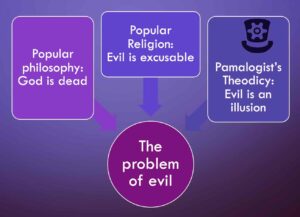
So, at the center of that debate will be something called the Pamalogist’s theodicy. A theodicy, in case you missed it, is an explanation of how God can exist if there is evil in the world. We talked about this in earlier episodes, but today we’re going to cover a particular aspect of it given what I discussed in my last two episodes, in which we dealt with the question of free will and of how one who believes Maximized Awesomeness is real, might look at it. Namely, I pointed out that for every possible good thing to be real, free will might be a good thing, but not necessarily in a Universe one finds oneself in at any particular moment. I drew an elaborate picture of a multi-level nested digital library, in which you have not just a dual nature, but might just have a multiple nature. I drew up two categories of what you would be in Maximized Awesomeness – you as an accessor of instances of you, and you as instances of you being accessed in that digital library. Look up the episode on Compatibilism. I compared Universes that are deterministic with CD Read Only Memory media and those that allow interactivity with CD Read Write media or interactive video games. CD ROMs represent an epiphenomenal dualism. CDRWs represent something more like the substance dualism of Reneé Descartes. For Maximized Awesomeness to be true, both types of media, both types of Universes, would have to exist. Otherwise, every good possible thing would not be real.
This brings me to our last episode, Episode 13, where I made much ado about nothing. I should clarify something about that episode. Knowing my personality helps. Sometimes I say clever things that sound absurd just to get attention. In Episode 13, I suggested that there was still something in nothing from a philosophical point of view, since abstract possibility still exists even if there is nothing. But there’s a non sequitur there. All possibility, which is indeed a constant, is not actually contained in the space of nothingness, so much as it still exists whether or not there is nothingness. All possibility doesn’t have a place or time. It is simply an attribute of reality. Math, accurate math, is a constant – whatever is true in it. So, if there was absolutely nothing in any Universe, the total set of possibility would still exist. It would continue to be an attribute of reality, not of the nothingness itself.
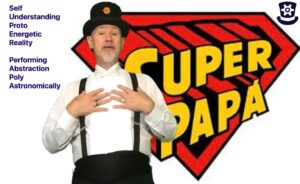
That point clarified, this is where today’s episode picks up. We were talking about the fact that pure possibility is a set of ideas. It is information. As information, it contains a number of things. It contains patterns. It contains patterns capable of computation. It contains computations capable of consciousness. And it contains consciousness capable of understanding itself – the totality of possibility. All of this is to say, that if it is true that reality and consciousness are comprised of information, then all possibility understands itself. It is Self-Understanding.
That’s a pretty quick summary. It’s also worth repeating that last point. So listen again: “If it is true that reality and consciousness are comprised of information, then all possibility understands itself. It is Self-Understanding.”
It’s a pretty wild thought, but let’s look more closely. It isn’t actually all possibility that is Self-Understanding. It is the computational part of all possibility that stems from its patterns that results in consciousness that is self-understanding. Right? The computational, self-aware part may understand the rest, but the whole of possibility is not self-understanding. Only a subset of all-possibility is capable of understanding all possibility. But either way, all-possibility is understood by possibility itself because that is a possibility, and the computational patterns within all possibility exist to make it happen.
Now, today’s episode is about defeating evil and that is where all this is heading as we move from the subset of self-awareness to the subset of Maximized Awesomeness. We might see how one possibility in the total set of possibility is a subset of conscious computational patterns that would maximize awesomeness. It would first understand what maximized awesomeness would be. It would know why it should be. And it would also know how to make it real, understanding all possibility. All of these contents within conscious computational patterns are part of the total set of possibility. The result would be the realization of Maximized Awesomeness from pure possibility.
The problem is that also existing in the total set of conscious computational patterns is the possibility of maximized awfulness, maximized evil. By definition, Maximized Awfulness would involve the utter defeat of Maximized Awesomeness just as by definition, Maimized Awesomeness would involve the utter defeat of all awfulness, including Maximized Awfulness.
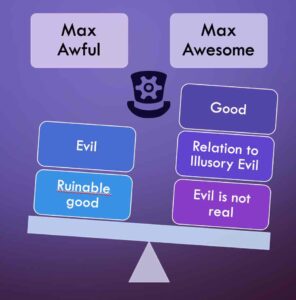
Fortunately, we can readily see that the two concepts are mutually incompatible. If one defeats the other, the other won’t exist. But since all possibility exists as a constant, how can either one be defeated? Neither one can ever be eliminated as possibility. But there is a simple answer. If possibility and realization of possibility are not the same thing, then the possibility of evil does not have to mean the realization of evil.
Now some of you may be having thoughts about the observation of evil at this moment. Hold your empirical thoughts. We are are still dealing with a priori reason here. I’ve addressed the problem of evil in previous episodes, as you may recall, so let’s review. For Maximized Awesomenss to be real, every good relationship to evil must exist. Otherwise, every good possible thing won’t be realized. It’s as simple as that. This explains the observation of evil, so long as the evil itself is illusory. For Maximized Awesomeness to be real, the appearance of evil is necessary in at least some Universes. Otherwise, every possible good thing can’t happen.
The result would be that you think you are observing evil, but you are merely responding to a circumstance you think evil exists in in some good way. This is what the Pamalogist believes. The circumstance is loaded into your conscious perception as an opportunity to respond with some relational good. In other words, you can react with awesomeness in any circumstance, and you should. Be creative. What’s the best you you can be in this circumstance? Go for it.
Now if you think I am scuffing off evil as an illusion without any forethought, think again. I spent some time demonstrating through probabilistic abduction why it is that consciousness is not subject to time, but rather time is subject to consciousness in more than a few of our previous episodes. The result was a probabilistic a priori proof that the picture of life I’ve been painting is more than wishful thinking. It’s based on math. And it’s very good news. See my episode o Probability for the details. I won’t have time to repeat that here. I just need to bring all this together for you so you can see that what I’m telling you rests on a very solid foundation. I can easily defend it.
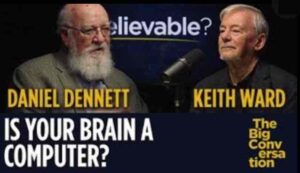
Ironically, the weakest link in my logic is found in the leap from information to consciousness – the very thing that philosophers of mind and neuroscientists today have embraced. Whether a person leans toward the panpsychism of layered consciousness, or a larger leap towards the biological emergence of it, every monist has to admit, that it is computation that is sparking up consciousness from the physical world. What makes consciousness possible is that computation. As one of today’s popular favorites, Daniel Denet insists, and most agree, the mind is a computer. But a pamalogist will tell you that there’s no computation there that doesn’t already exist in the patterns found in all possibility. Therefore, the patterned information that makes for the conscious perception is part of an ever existing constant, simply being biologically manifest.
But that’s a digression. Let’s talk about evil. Evil is a possibility but if Maximized Awesomeness is real, then evil is not a reality since the two things are incompatible. Conversely, if Maximized Awfulness were a reality then nothing good would be a reality, most especially Maximized Awesomeness. Well, it just so happens, that as true as it is that the presence of the appearance of evil tends to defeat the idea of a benevolent all powerful God, or Maximized Awesomeness, so also does the presence of good things defeat the idea of Maximized Evil.
At first appearance, everything that can be said of Maximized Awesomeness can be said of Maximized Awfulness, just in reverse. We could say that every relation to good must exist for Maximized Awfulness to be real. We could say that the definition of Maximized Awfulness would be that than which there could be nothing worse, containing every possible evil and nothing good whatever. Do you understand that such a thing exists as a possibility? Do you see how that sort of absolute evil would be incompatible with the reality of absolute good?
Of course, and what we observe, seems to be a random mixture of things – some good, some bad. Got it. So does that mean that everything is an illusion – the good because Max Awful requires all good things to exist as an illusion for the sake of relationship with bad reality, and the bad because Max Awesome requires all sorts of bad things to exist for the sake of relationship with good reality?
If that were the case, then Maximized Awfulness would be a reverse mirror image of Maximized Awesomeness in every way. Do you see it?
Good. And what we obviously have there, is a definition of the devil. Right? Knowing the nature of the devil is very useful for our thought experiment and now we have a very precise definition of Maximized Awfulness. But now let’s slay the devil together by looking more closely at the contents of all possibility that would be found in Maximized Awesomeness that would not be found in Maximized Awfulness in any way that would counter or negate the good of Maximized Awesomeness.

I’ll start with an observation attributed to Jesus by Matthew, who in speaking of the devil, is said to have said that any kingdom divided against itself could not stand. Now think about this. If an all good group of people does something together. Let’s say they want to build a building, then they will cooperate. They will readily select a means of agreement on how to build the tower. They will happily participate together in a way that a good end can be achieved. They will do all of this together because they are good-hearted, selfless, putting personal pride and gain to the side for the sake of the others. Could the same thing be said of a band of evil-doers? No. Evil doers would not be capable of building a building for the sake of evil because selfish pride and personal interest would prevent it.
Typically, the only way evil accomplishes monstrously bad things is through either the randomness of a Universe, which brings on chaotic destruction and suffering, or through the error and deception of intelligent do-gooders, so that they might bring it on themselves. The result is that even if maximized awfulness was self-aware as possibility, the most awful thing it could accomplish would be impossible to accomplish because no real good thing could exist to deceive, destroy or make suffer. Each of those good things would merely be an illusion by definition.
When you multiply two negatives together, you wind up with a positive. The only thing evil could negatively affect, is evil itself. As such, the kingdom of the devil, in the reverse image we’ve described, is inherently divided against itself. It is rendered powerless in the light of the kingdom of God. Contrast these two realms. In the realm of absolute evil, evil negatively affects evil only, while there is no real good to affect. In the realm of good, good positively affects good, and its relationship to evil is also a positive affect, even if the evil itself is illusory.
That’s a very big inherent difference. But it isn’t all so rosey. We need to change this thought experiment a little bit. If what constitutes true evil involves not just the real destruction of evil but also of real good, then we could allow in the kingdom of darkness the existence of real good, that could subsequently be damaged or turned into evil in as many ways as possible. This would be inherently worse. The image against Maximized Awesomeness is no longer symmatrically opposite that way, but we do wind up with real evil if that happens. A negative times a positive, is indeed a negative. So if we’re looking for Maximized Awfulness, what we should be considering is an awfulness that involves real good. The result is a relative awfulness, rather than a complete awfulness. To be maximized, it would have to bring to evil every conceivable type and variation of good.
Is this making sense so far? The problem with realizing this is that the higher and more profound the type of good it would have to bring down, the less achievable it becomes. What, for instance, of incorruptibility? How do you destroy that which is incorruptible? How do you taint it? By definition, it can’t be tainted or destroyed. Therefore, the entire category of incorruptible good things would have to go undestroyed and untainted. You can start to see here how maximized awfulness is necessarily limited in its ability.
Of course, we might be tempted to say that that means maximized awfulness is not omnipotent, whereas Maximized Awesomeness is omnipotent. But is that true? Can Maximized Awesomeness allow evil? No. It might possess that power, but it chooses not to exercise it, we might say. One attribute then, that accurately portrays the difference between Maximized Awesomeness and maximized evil conceptually, is the power of choice that each might possess. Maximized Awesomeness chooses not to allow reality to include any shade of evil. Maximized awfulness chooses to allow good to be part of reality, rather than mere possibility, to the extent that anything good might be harmed or destroyed, or ultimately become evil. Both Max Awesome and max awful select reality from all possibility. Neither one chooses to make all possibility real in its entirety.
The complete restraint of all evil by Maximized Awesomeness thus involves the defeat of an entity that cannot restrain its greatest features, including Maximized Awesomeness itself. The restraint of as much good as possible by maximized awfulness is limited to those good things that can be brought down to ultimately become bad things, or in some way hurt. Moreover, maximized awfulness must, by definition, permit every conceivable good thing to exist because either it could allow it to exist because it could defeat it, or it would have to allow it to exist because it could not defeat it or prevent it from existing on account of the computational possibility of Maximized Awesomeness. The result is that every manner of good has to exist both in the case of Maximized Awesomeness and in the case of maximized awfulness.
This puts Maximized Awesomeness at a very great advantage in prevailing in any struggle over what becomes real out of all possibility. For one thing, Maximized Awesomeness cannot be defeated by maximized awfulness, even by the inferences from the definition of maximized awfulness. While in the definition of Maximized Awesomeness exists the defeat of an illusory maximized awfulness, in the definition of maximized awfulness, there is no such thing as the defeat of Maximized Awesomeness since that can’t be both real and illusory. It requires Maximized Awesomeness to be real to defeat it, thereby making any real evil out of it. It requires that it not be real, since by definition it would defeat itself.
You see then, how no kingdom that is divided against itself can prevail. Maximized Awesomeness remains intact because positives multiplied are unlimited, whereas, maximized awfulness has severe limits that prevent it from multiplying every positive by a negative. Awfulness, even when maximized, is easily defeated by the many invincible realities contained in a Maximized Awesomeness that any form of maximized awfulness is incapable of preventing.
I hope that at this point, you can see how Maximized Awesomeness is not defeated by its opposite as a possibility. In the selection of what becomes real, a Self-Aware portion of computational pattern in the total set of possibility, which is always possible in any Universe or dimension, the choice to restrain every manner of evil is a logical one. It’s also a moral one. But note that unlike Leibniz and Aquinas and others, I haven’t suggested that the reason God must be real is that it would be the morally right thing to be real, as true as that may be. I’ve pointed instead beyond concepts to how it might happen, by looking at Maximized Awesomeness Itself, as pure Logos in the realm of all possibility. By Logos I don’t just mean Word. I mean the Logic of Perfection. I mean Truth. And I mean it in two senses. First, the truth of all possibility, as possibility. Second, the truth of what is real – a subset of all that is hypothetically possible.
Maximized Awesomeness is what is real. And this means that if anything could be good, it’s true. None of this is easy to believe when we see evil. We assume that what we see is real, not illusory. And we don’t see all that could be good. We are incapable of that. All this is what makes pamalogy such a challenge. It’s hard to wrap your head around. It doesn’t address your experience on an emotional level. It gives you the logic that makes an immeasurably better reality than what you’ve come to believe in something you might lay some hope in. It would be nice if it was true, but you don’t think it is. Even if I’ve proven it to you, you may be thinking to yourself, that it just couldn’t be true. I’ve got to have a flaw in my thinking somewhere.
I understand that. And I also understand that this is why it’s healthy to have peer review. By offering pamalogy up as something that can be examined by other philosophers, scrutinized, my logic will either be overcome or sustained. Maybe they can prove your gut instincts right. The place where this conversation will take place is the CounterChecker – a place where any idea can be vetted. While there are plenty of philosophical journals, very few people read them. The CounterChecker as a truth detector, will be a place a non-industry audience would be far more likely to see it. I haven’t been expecting my blogcast listeners and readers to be schooled in philosophy physics or neuroscience. I’m just teaching awesomeology. It would be awesome if we had a Truth Machine and there are plenty of things that would make this world awesome. Just sharing these blogcasts would be a step in the right direction.
Awesomeology isn’t just about ultimate things. It’s also about your awesomeness. It’s time to talk about you. And although as I see you, you are many yous being accessed by accessors of you, in a multi-layered nested digital library of awesomeness and such, I mean the you that you usually think about in the end data – one that has just one life to live – one irrespective of any other Universes or dimensions. We need to talk about how you can be the best you that you can be. It’s time we took a look at some of the other features of the Pamalogy Society as I see it. I want to share my whole vision. So in our next episode, we’ll bring things down to Earth a little bit and start to do just that. Ciao!
URL for sharing this transcript page: https://pamalogy.com/2022/03/21/episode-14-defeating-evil/
URL for sharing this podcast: https://player.captivate.fm/episode/6d227d2d-ca4f-4e1c-8b38-36fd6d204a1e
URL for sharing just the audio file: https://podcasts.captivate.fm/media/f350a4cf-a805-4b14-9eea-28afaf1e9358/episode-14-defeating-evil.mp3
Previous: The Speed of Nothingness
Up Next: What Are We?

